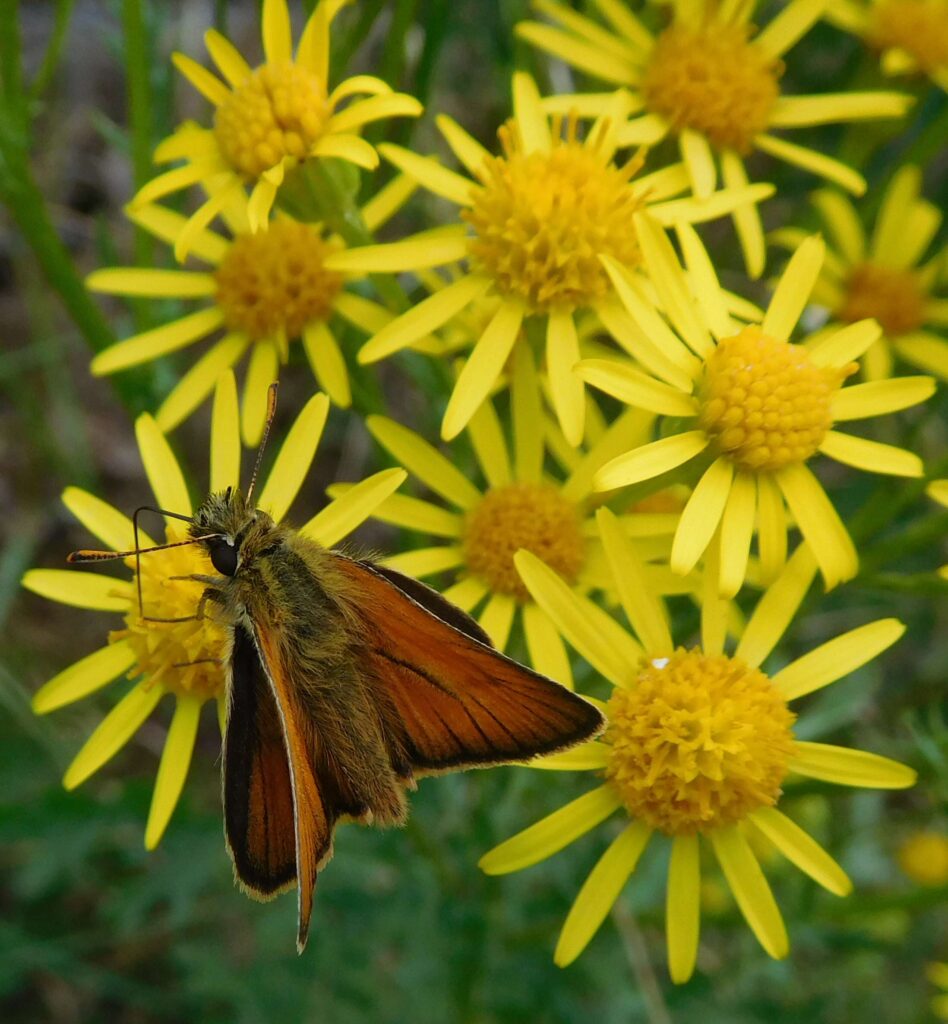
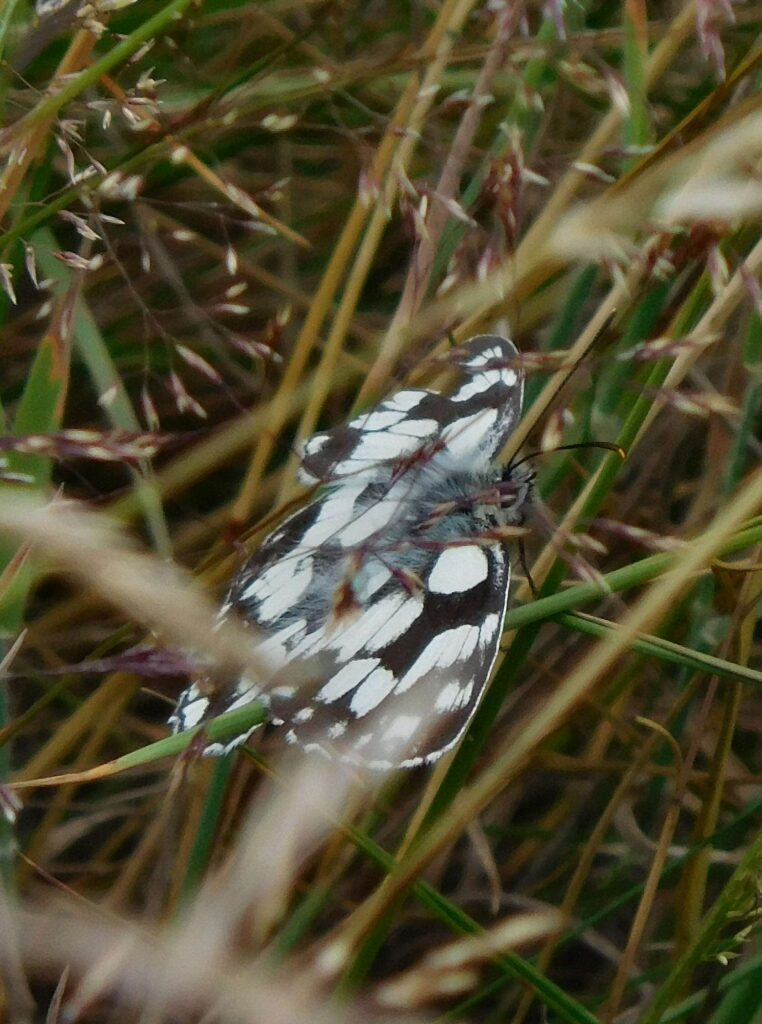
There were also many Meadow Browns – as with the Skippers, they had clearly all pupated recently; a Ringlet; two Red Admirals; and a Small White.
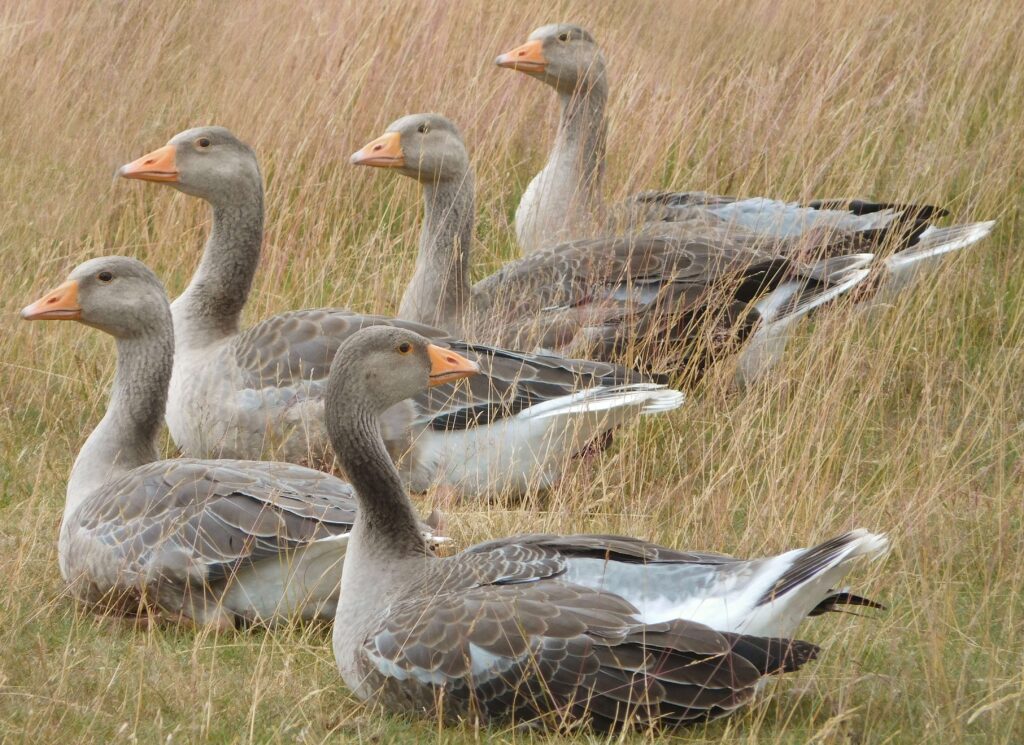


There were also many Meadow Browns – as with the Skippers, they had clearly all pupated recently; a Ringlet; two Red Admirals; and a Small White.

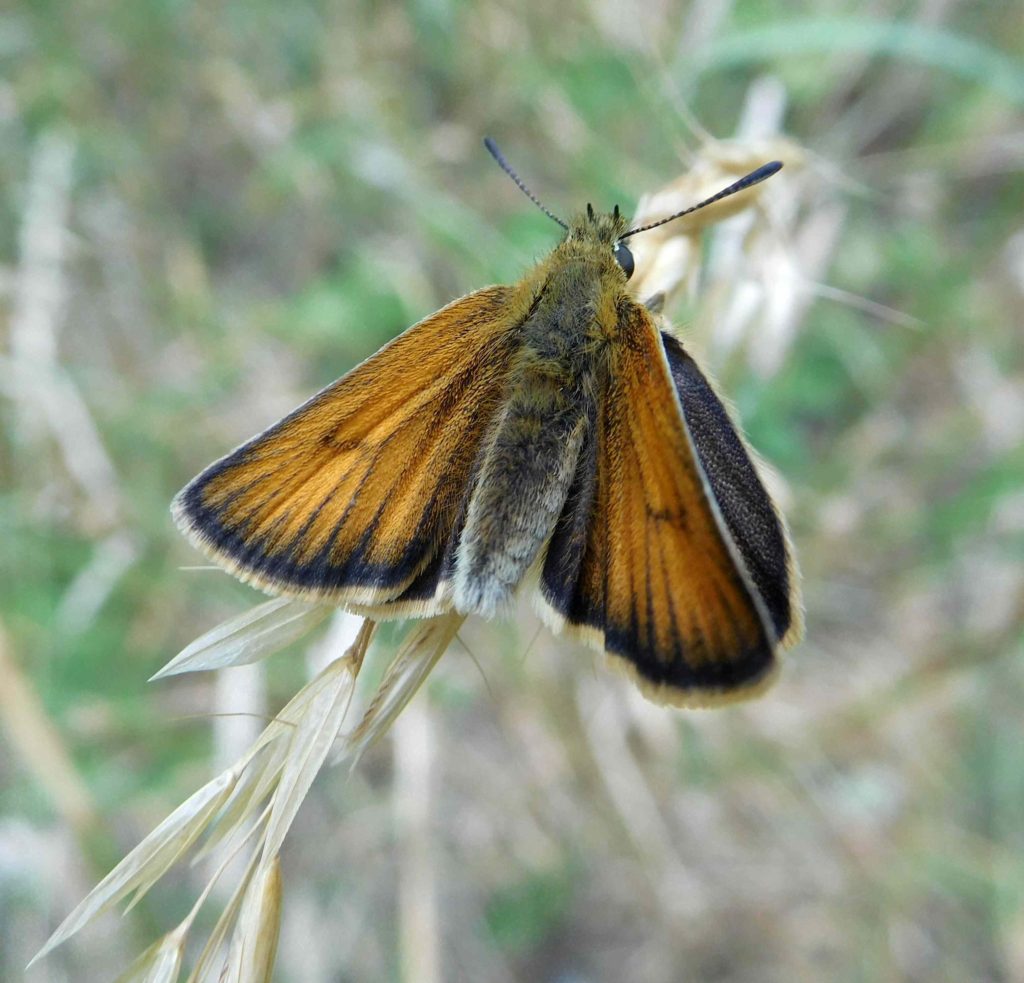
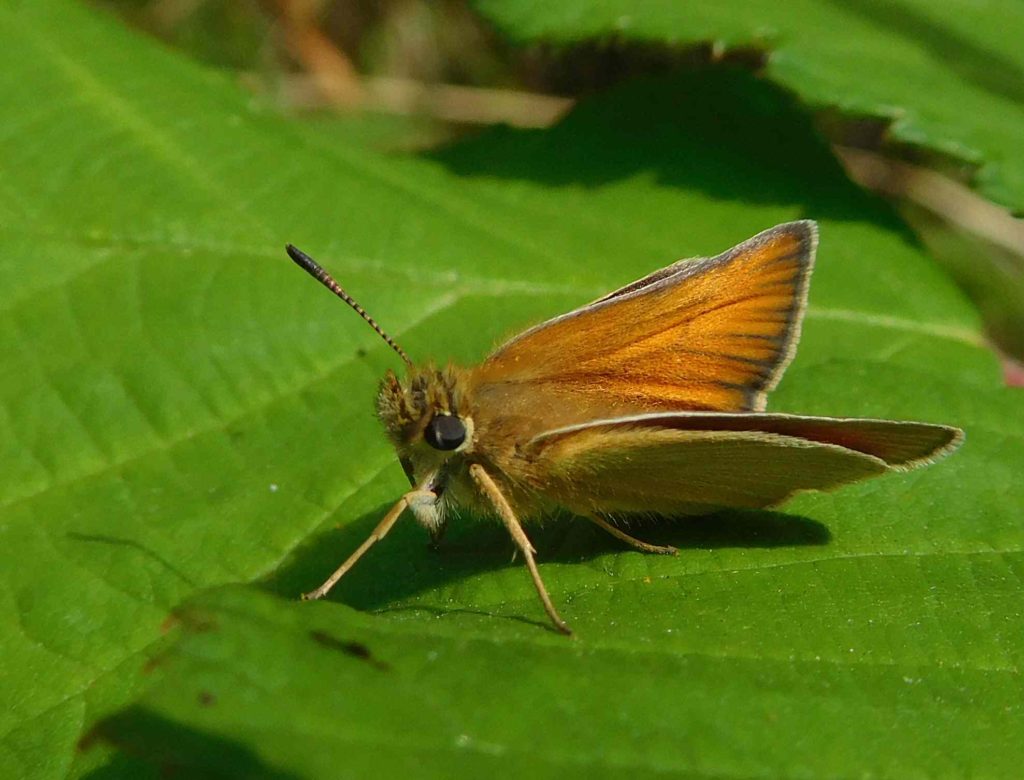
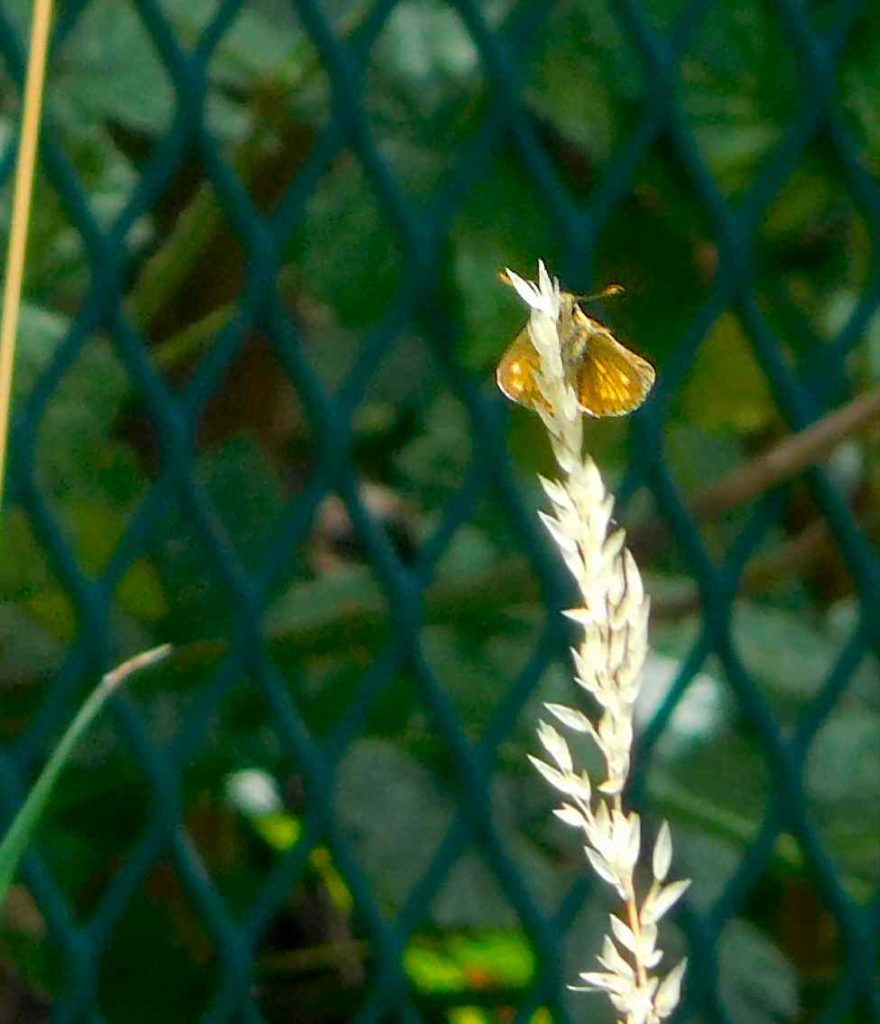
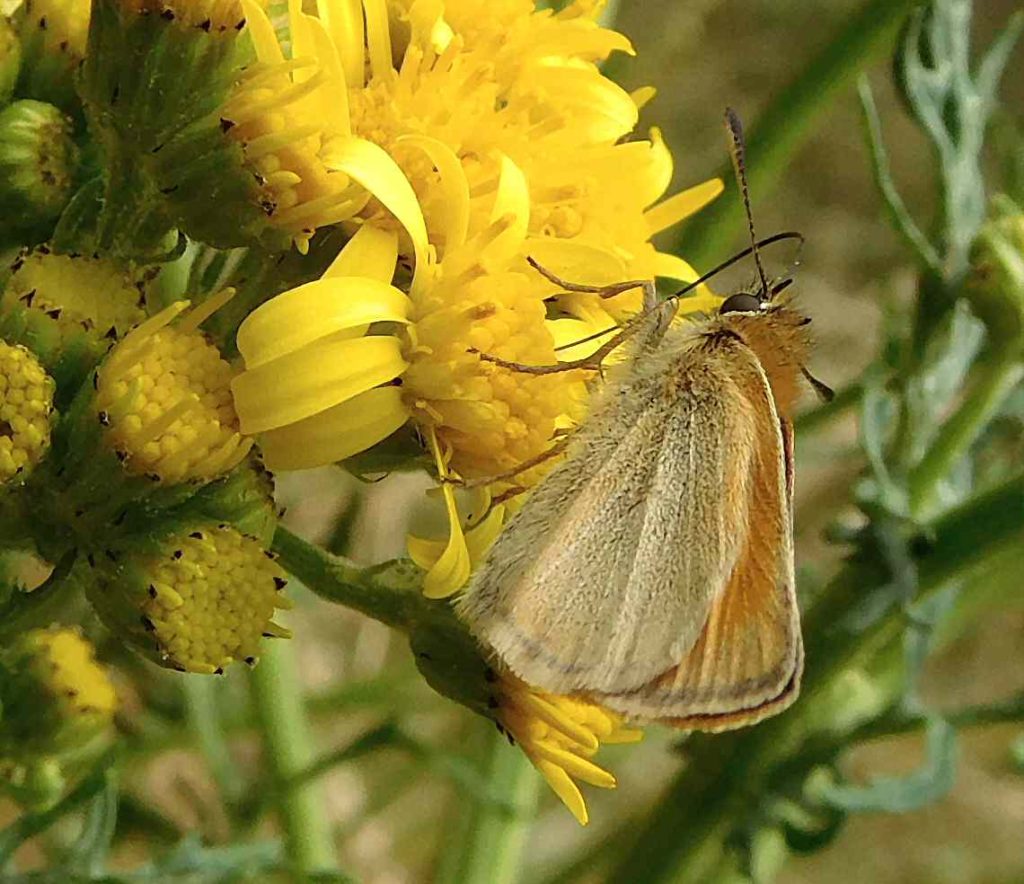
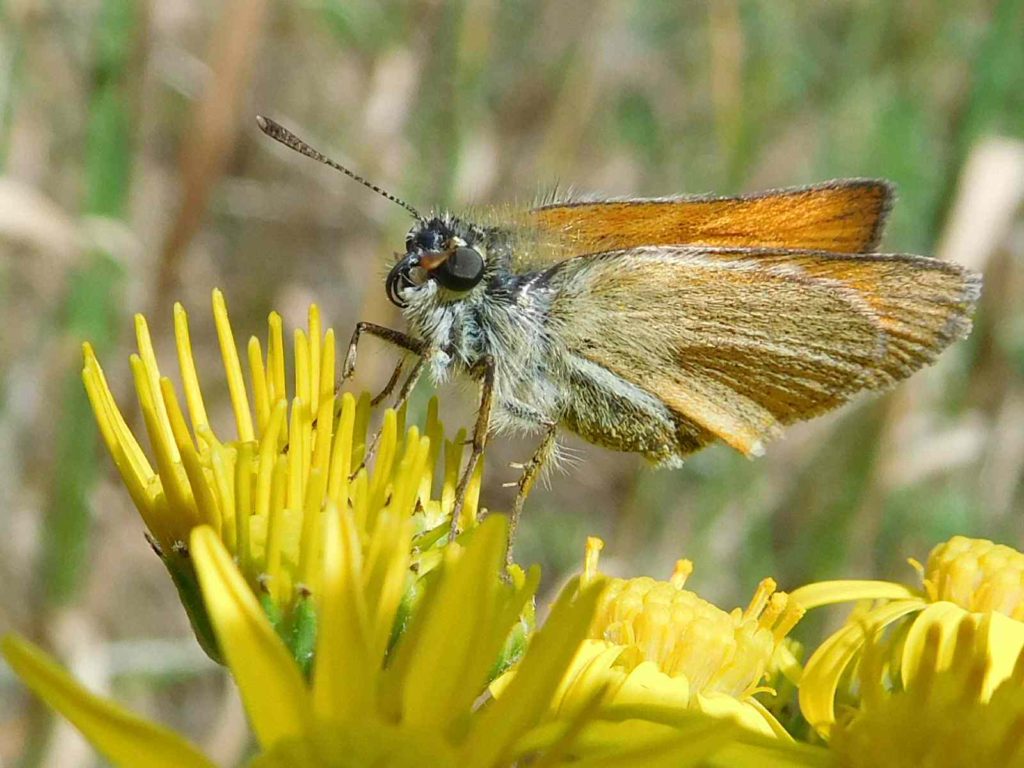
Finally on the 8th, walking round with Netty, I saw a Ringlet, its darker wings unmistakably marked with a line of little rings.
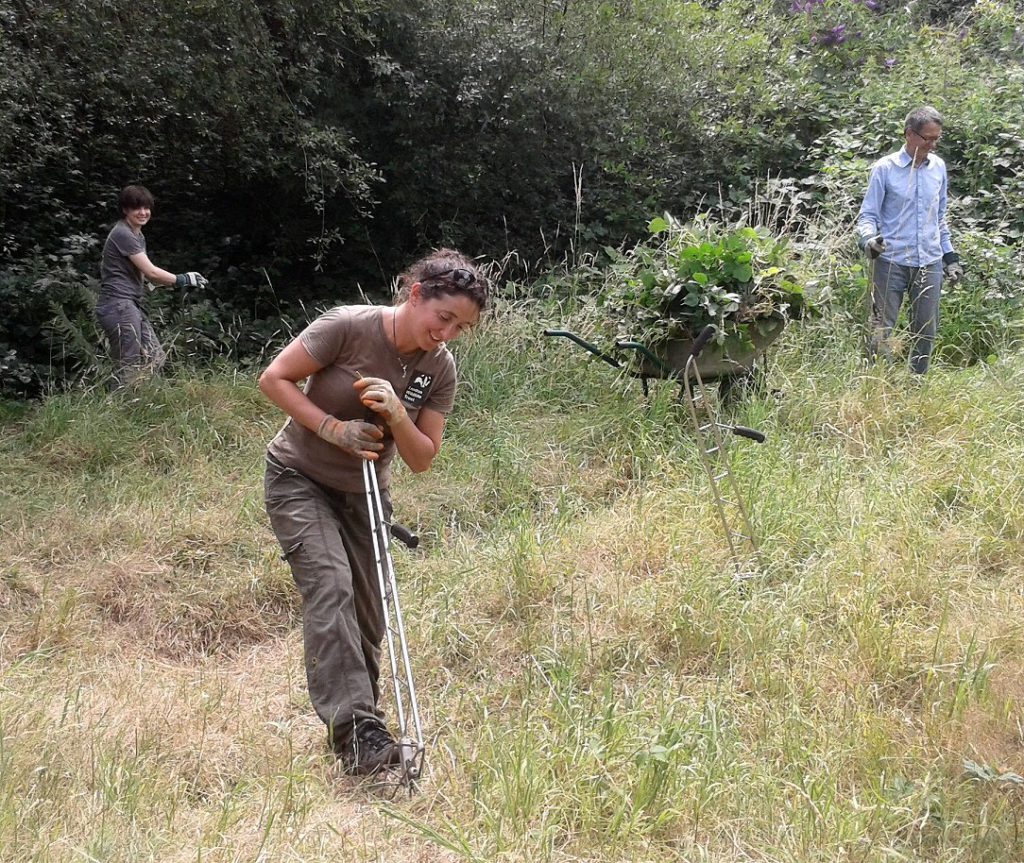
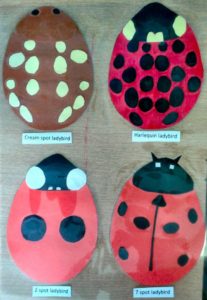
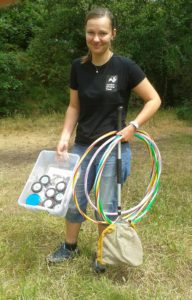
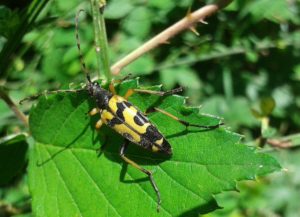
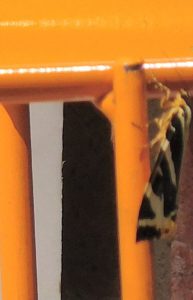
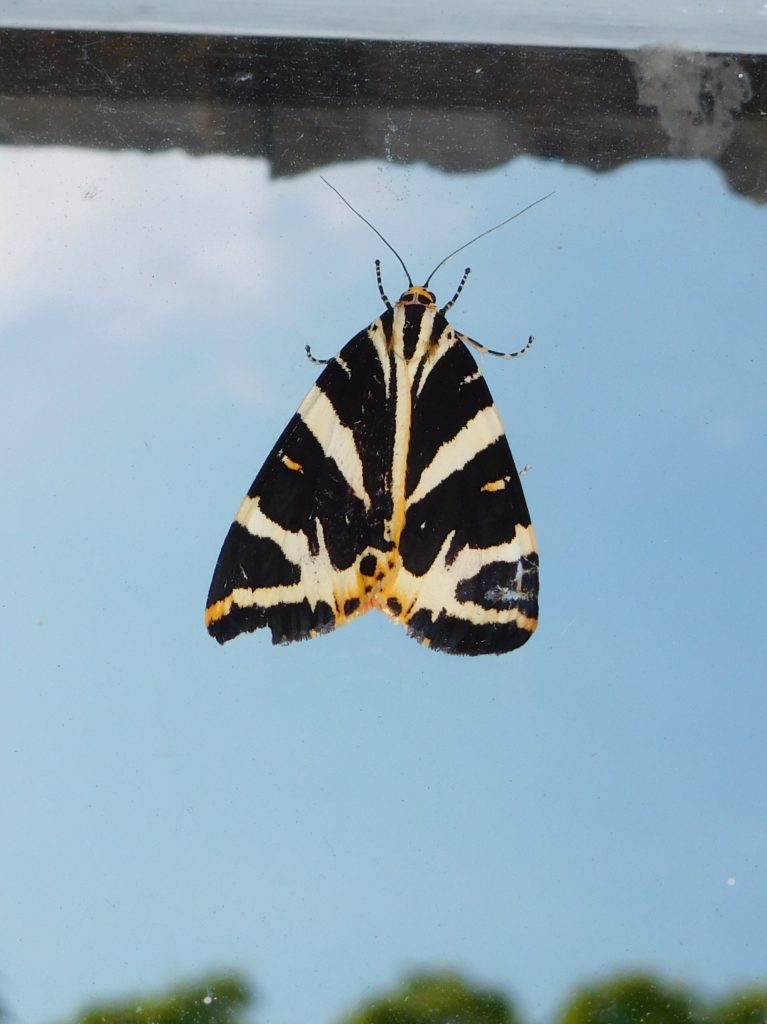
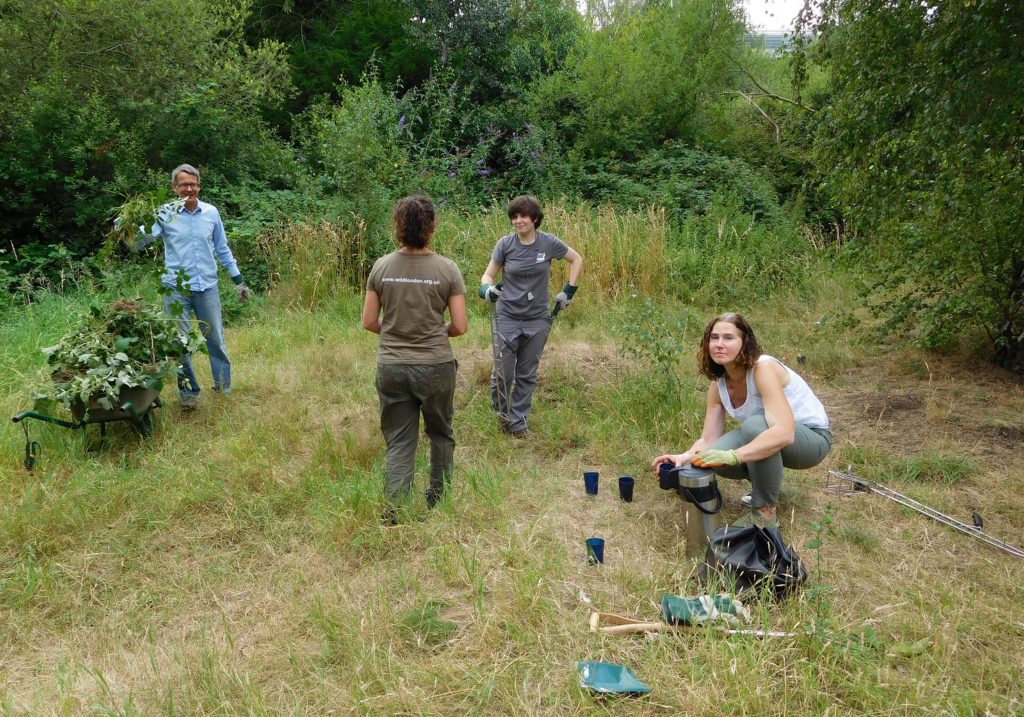
On a sorry note, Netty spotted a small tuft of feathers, still attached to a bit of skin. The scrap was whitish, spotted brown, like a Song Thrush’s breast, torn off by a Sparrowhawk: probably one of the pair that nested here until last year, but must now be nesting somewhere nearby. I reflected that I hadn’t heard the male Song Thrush singing for a fortnight. What a sad bit of fluff to pick up.
The day looked unpromising for a nature walk, let alone a butterfly transect, but it was time to do one, so after a cursory tour to clip the worst of the brambles from the paths, we set off with clipboard and cameras to see what we could find.
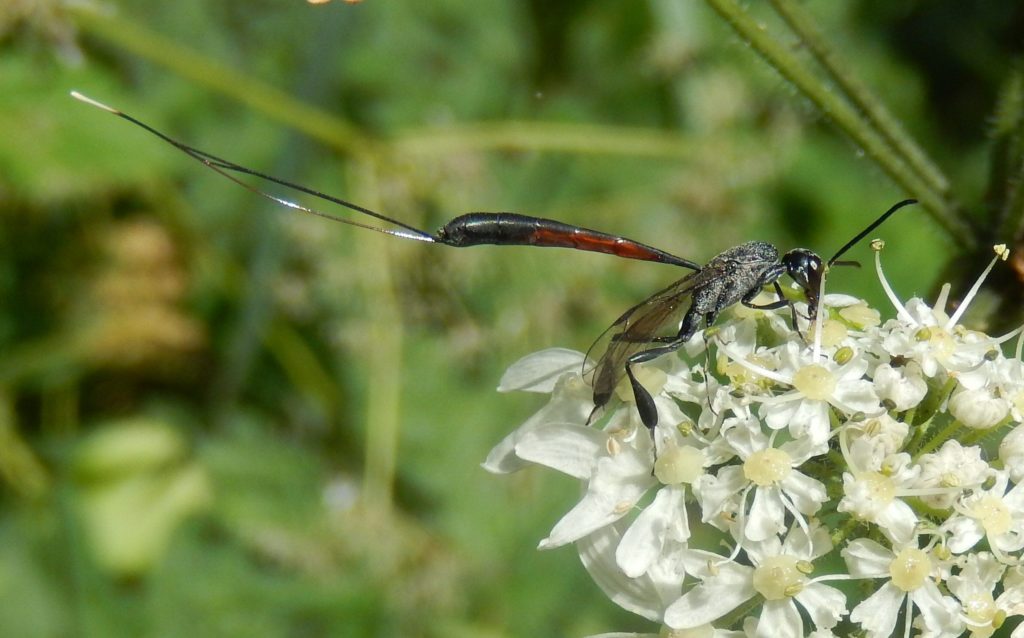
The hogweed, still in flower despite weeks of rainy weather that has caused many stalks to topple, was alive with flower beetles, bees large and small, and this magnificent Ichneumon wasp with its incredible ovipositor.
At first we saw only white butterflies, but a Comma was sunning itself, and a Speckled Wood had somehow survived the wet weather.
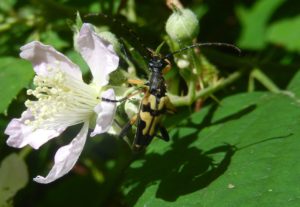
We saw two Strangalia maculata longhorn beetles taking nectar. They are Batesian mimics of wasps, looking in all truth only very slightly waspish, but perhaps young birds are put off. Or perhaps they do in fact taste foul.
We were just discussing the Sparrowhawks as we approached their nest tree when a commotion broke out along a branch, and a Sparrowhawk flew rapidly with its claws forward: a Squirrel raced away from the nest, hotly pursued by the angry bird; they leaped to the neighbouring tree and scurried up the matching branch out of sight. The Sparrowhawk broke into a loud excited chittering trill. We were all excited, laughing at the speed, the impossibility of reaching for a camera.
A Holly Blue flew over the pond, above several pairs of mating Azure Damselflies and a Yellow Iris now chewed right down to a semi-leafless state by the Iris Sawfly larvae.
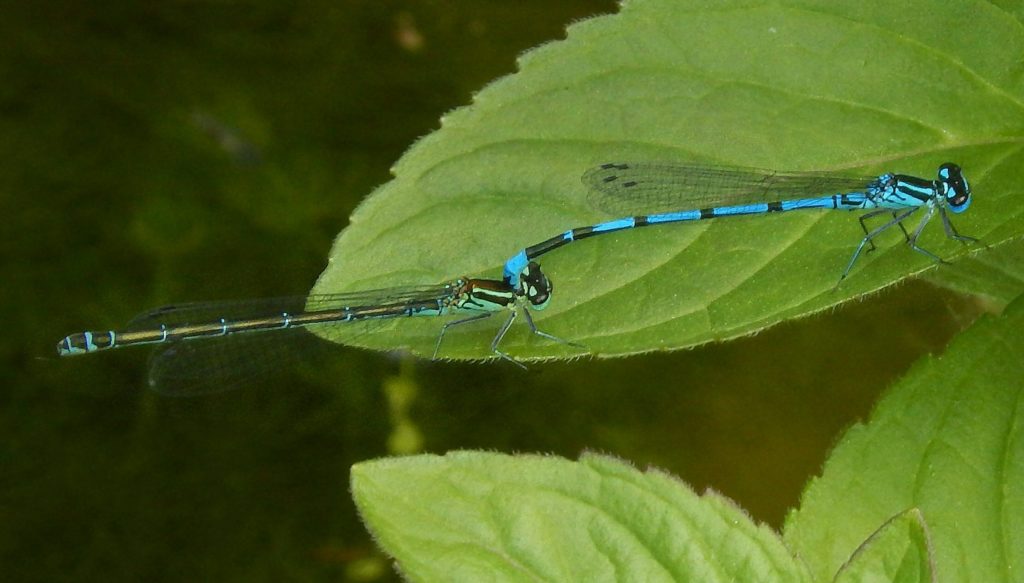
Down at the Anthill Meadow, a single Small Skipper perched on an ear of Yorkshire Fog.
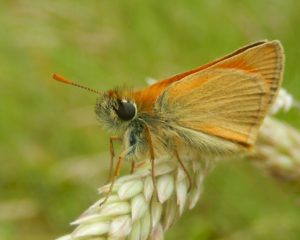
On the next ear was a male Bluetail Damselfly: they have emerged from the pond in the past week.
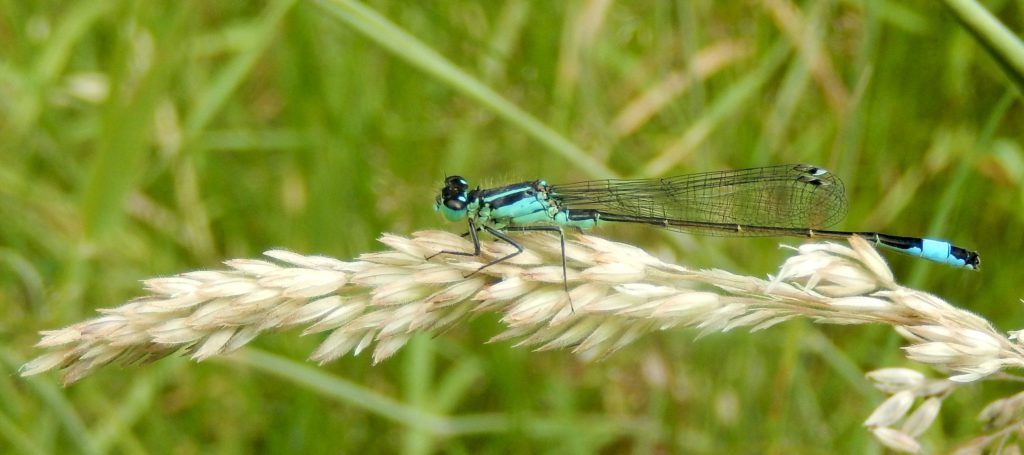
The wooden rail was sticky with snail pulp: a Song Thrush had hammered three snails open on the exposed woodwork, leaving shells and sticky patches behind.

Two days ago I saw a Cinnabar moth in the Small Meadow. There is plenty of Ragwort coming up, so with any luck there will be plenty of caterpillars soon.
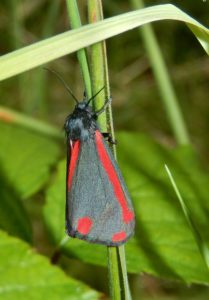

Well, what a piece of luck. I was just inspecting the ragwort where the Cinnabar caterpillars were clustered (by the rail of the Anthill Meadow), and had seen they had grown, and had dispersed from one stalk to three or four — when I saw an Ichneumon approach with the usual dancing flight. Grabbing the camera, I took three photographs, of which the above is the last, and I think the prettiest.
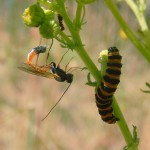
This is the second photo: the wasp has her abdomen curled beneath her body, towards her prey (ok, host, she’s a parasitoid).
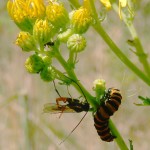
And this is actually the first photo, the wasp very close to the caterpillar, her ovipositor sharply folded under her thorax: the caterpillar has just twitched sharply, presumably on being ‘stung’ with an egg now fatally implanted in its body. The cinnabar is aposematic, full of bitter and poisonous chemicals, which don’t protect it against this sort of attack, evidently.
Down by the pond there were plenty of Azure damselflies, one Common Bluetail, and some really tiny newly-metamorphosed froglings hopping about in the mud. A Small Skipper perched obligingly on a Yellow Iris leaf, not far from a plump Iris Sawfly larva.

Down at the Picnic Meadow, ignoring a picnic and dropped bicycle in the entirely dry brown grass, an Essex Skipper visited some Bramble flowers. It’s just like the Small Skipper, but without the orange on the antennae. A Meadow Brown sat in the grass.
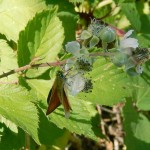
In the woods, a Holly Blue flew high, near a Holly tree. A Small White completed the butterfly tally for the walk.
We had a lovely day down the reserve in the warm sunshine with a gentle breeze. We dug out an unwanted post with extreme use of pickaxe, crowbar and shovel, and thus refreshed did the butterfly transect. It found a Red Admiral, some Speckled Woods, wonder of wonders a Small Skipper (the second Skipper species this week), a Meadow Brown (not common here), and a Green-Veined White. Not a bad haul. And a lot of Peacock caterpillars, if those count!
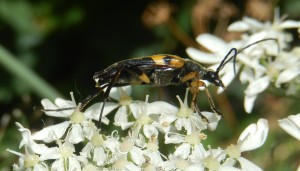
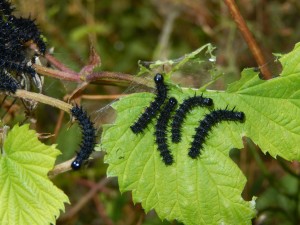
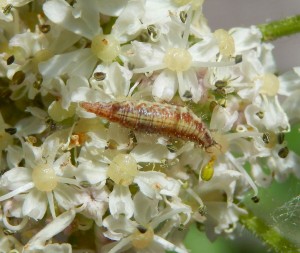
It was a pleasure to do the butterfly transect today. Even before I reached the Gunnersbury Triangle, I saw a Red Admiral in the street.
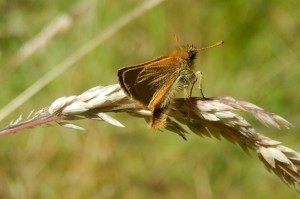
Once inside, I was rewarded with several very small, very active Skippers with their jittery, chaotic, jinking flight. It is hard enough to follow with the naked eye, close to impossible with binoculars, and presumably difficult for bird predators (as well as the reason for the name Skipper). When one finally did perch, it was clear it was a Small Skipper, as the Essex Skipper (not limited to that county) has more black on its antenna tips.
Down at the pond, a primary school class and a group of enthusiastic teachers were catching Ramshorn Pond Snails, Newts, Dragonfly larvae and this fine Water Scorpion.
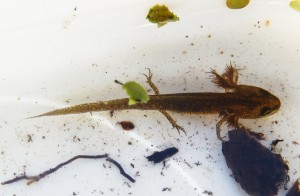
This small newt has nearly completed its metamorphosis from a tadpole. It has four legs, the hindlegs so thin they were nearly invisible to the naked eye, but its gills are still large, feathery and projecting from the sides of the head.
One of the large handsome hoverflies that frequents woodland glades came into the hut. This species has the front of the abdomen pale yellowish but no other stripes; the pale area seems to glow when the fly is hovering, presumably making it look sufficiently black and yellow to warn off predators (of course, many bees are black).
Finally, here’s a Strangalia maculata, one of our most handsome longhorn beetles. Nearby was another Red Admiral.